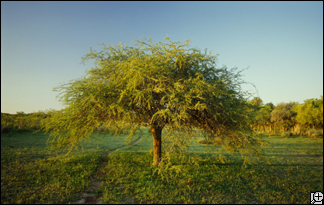Store DNA from plants around the world
New York Botanical Garden may be best known for its blooming flowers, but garden researchers are working hard to capture DNA from thousands of plants around the world.
 The Bronx garden is hosting this week's meeting and participants from many different countries will lay the groundwork for the cataloging of a vast part of the Earth's vast biodiversity within two years. how to proceed
The Bronx garden is hosting this week's meeting and participants from many different countries will lay the groundwork for the cataloging of a vast part of the Earth's vast biodiversity within two years. how to proceed
The project is called TreeBOL (Tree Barcode of Life). As in a similar project being carried out focusing on fish species in the world, participants will collect genetic material from plants around the world.
A slice of DNA will be used to make the bar code, similar to how a grocery store product is projected to calculate the price. But with plants and animals, the scanner will look at the specific sequence of four basic fusion blocks of DNA to identify the species.
The database will help identify many plants that exist in the world, where they live and whether they are in extinction. These results are very important for environmental conservation and protection as the population grows.
This job is very big. Plants account for 25% of all plants and an estimated 100,000 species. Participants come from countries like South America, India and the United States.
In order for the database to be useful, a similar DNA slice must be used in all samples to be able to compare species with each other. Part of the work at this week's meeting is to determine which slices to use, as well as identify logistical issues between more than 40 participating organizations.
The garden has received a grant of nearly $ 600,000 to coordinate the project. While it will take another two years for the genome database to be completed, the team will visit certain areas for research. - like plants in East North America and regions in Malaysia, India and South Africa, as well as endangered plants - during that time.
- HP built HP Store chain
- 7 species of plants have special abilities like humans
- 1/5 species of plants in the world are about to become extinct
- Does the plant have sex?
- Video: The shopping store does not have a checkout counter in the US
- The richest carnivorous marsh in the world
- The most impressive photographic image stored on bacteria - the new type of human hard drive
- Interesting 'tricks' are used by plants during reproduction
- Surprise with the creature in the warm lid
- Plants under a microscope
- The project turns trees into multi-purpose biological sensors
- The 10 most exotic plants on Earth
 Why do potatoes have eyes?
Why do potatoes have eyes? 'Tragedy' the world's largest carnivorous life: Death becomes ... public toilet
'Tragedy' the world's largest carnivorous life: Death becomes ... public toilet Tomatoes were once considered 'poisonous' for 200 years
Tomatoes were once considered 'poisonous' for 200 years Detecting microscopic parasites on human face
Detecting microscopic parasites on human face Top 5 plants with special abilities
Top 5 plants with special abilities  Mushrooms - The silent 'architects' of nature
Mushrooms - The silent 'architects' of nature  Technology of growing plants in the dark
Technology of growing plants in the dark  We are about to understand the language of trees.
We are about to understand the language of trees.  Can animals heal themselves?
Can animals heal themselves?  Do fake plants make us feel good?
Do fake plants make us feel good? 